The most comprehensive and practical guide to Peru in South America, return to the Inca Empire, and dream of Machu Picchu - the Holy Land of Peru
Preface
Ten thousand words complete. China-TravelNote, the South American expert, presents this ultimate Peru guide!

In 2016, I traveled through every country in South America, including Colombia, which had just emerged from a 50-year civil war. Visa issues ultimately stopped me in Venezuela (and I missed the last place I wanted to see: Angel Falls). By then, with the exception of French Guiana, Suriname, and Guyana, I'd experienced the best of South America, a somewhat imperfect end to my journey.
In the following time, I will divide it into several strategies to reveal to you the travel strategies of South America, the most mysterious continent on earth for Chinese people and the ultimate destination for travelers.
Today let’s talk about Peru, the descendant of the Inca Empire.
Opening
Peru is the most comprehensive country in South America. The crazy collision of ancient Incas and Indians and the later invading Spanish colonial culture, the dazzling natural scenery and the world-renowned food culture are enough to make you stop.
Machu Picchu, the "City in the Sky"—one of the New Seven Wonders of the World, a World Natural and Cultural Heritage Site, and  the "Lungs of the Earth"—the Amazon Rainforest—search for pink dolphins, catch caimans, fish for piranhas, and visit primitive tribes.
the "Lungs of the Earth"—the Amazon Rainforest—search for pink dolphins, catch caimans, fish for piranhas, and visit primitive tribes.

Lake Titicaca, the "Eye of America" - the home of the Uru people, explore the mysterious world of floating islands

Nazca Lines, "Alien Geographies" - An Unsolved Mystery for Humanity: Take a Small Plane to Gaze Over the Huge Drawings Hundreds of Meters Away

Practical Guide
visa
• Peru has conditional visa exemption
Chinese passport holders who meet the following conditions can travel to Peru visa-free for a maximum stay of 180 days:
A. Hold a visa valid for more than 6 months for the United States, Schengen Area, Canada, Australia, or the United Kingdom;
B. Possess long-term residency in the United States, Schengen Area, Canada, Australia, or the United Kingdom.
In addition, traveling to South America usually requires transiting through the United States. According to the requirements of the U.S. Customs, as long as you set foot on U.S. territory, even if it is a transit, you need to hold a U.S. visa, so it is particularly important to apply for a B1/B2 U.S. 10-year visa.
season
Most travel agencies offer combined tours of Peru and Bolivia, but theoretically, Bolivia and Peru aren't ideal for traveling together. Generally speaking, January and February are the best times to visit the two countries. Bolivia's Sky Mirror is ideal for traveling during the rainy season, with a higher probability of flooding from December to March. However, traveling to Peru during the rainy season can be difficult, and other Bolivian cities are also less suitable during the rainy season. Flights to the highlands (except in coastal areas) can be frequently delayed due to weather, making travel more suitable during the drier months of June to August. However, since the two countries are close, traveling together is more convenient, so consider the trade-offs. Most of Bolivia and Peru are located in high altitudes above 3,000 meters, with some areas exceeding 4,000 meters. Therefore, even in summer, temperatures from December to February aren't particularly high. Rather, the temperature difference can be significant. Sunny days can be hot, and UV rays are very strong, so wearing short sleeves is recommended. However, mornings and evenings can be cooler, so a jacket is recommended. If it's cloudy and rainy, it can get quite cold, requiring a sweater or even a windbreaker. Temperatures can be even lower during other seasons. Coastal areas of Peru, such as Lima and Nazca, experience higher temperatures. But overall, long-sleeved shirts and jackets are recommended for travel to Bolivia and Peru. Since the Bolivian Sky Mirror is at its peak during the rainy season in February, traveling to both countries is best done around the Chinese New Year.
Altitude sickness
Peru is located in the South American highlands, with Cusco at 3,400 meters. If you're used to living at lower altitudes, you'll likely experience some altitude sickness upon arrival. If you're concerned about altitude sickness, be careful not to overeat at meals upon arrival, eat less meat and more vegetables, and avoid alcohol. Once you've adjusted, you can resume your normal diet. Drinking plenty of water can also help alleviate altitude sickness. It's recommended to prepare some anti-altitude sickness medication and start taking it a few days in advance, as directed by your doctor. Bolivians and Peruvians often consume coca leaves, which promote blood circulation and oxygen delivery. During a three-day tour in Bolivia's Eduardo Abaroa Nature Reserve, my driver gave us some coca leaves to try. These leaves require long-term consumption to be effective; they're not effective if taken on a whim. Be aware that coca leaves are a drug ingredient. While legal in Peru and Bolivia, they should never be taken abroad.
About flights
 International flights: Travelers traveling to South America generally choose to transfer to flights in the United States, usually in Dallas (a U.S. visa must be held and sufficient transfer time is required, recommended to be no less than 2 hours). Luggage is generally checked directly to the destination.
International flights: Travelers traveling to South America generally choose to transfer to flights in the United States, usually in Dallas (a U.S. visa must be held and sufficient transfer time is required, recommended to be no less than 2 hours). Luggage is generally checked directly to the destination.
Domestic Flights: LATAM, the result of a merger between Chilean Airlines and Brazilian Airlines, is one of the largest airlines in South America, serving Chile, Peru, Brazil, Argentina, Colombia, Ecuador, and other countries. LATAM is a good choice for domestic flights within Peru. A bug with LATAM is that if you select Chilean nationality and book in Spanish, the price will be significantly lower than in English! You can buy with the translated version!
Official website: https://www.latam.com/en_un/
Long-distance bus
 Bolivia and Peru have well-developed bus transportation, with numerous bus companies. Cruz del Sur is a well-known Peruvian bus company, while Todo Turismo and Panasur are two of the more reliable Bolivian bus companies. Tickets can generally be purchased at the bus station or by checking the schedule a day in advance. You can also book and check schedules online:
Bolivia and Peru have well-developed bus transportation, with numerous bus companies. Cruz del Sur is a well-known Peruvian bus company, while Todo Turismo and Panasur are two of the more reliable Bolivian bus companies. Tickets can generally be purchased at the bus station or by checking the schedule a day in advance. You can also book and check schedules online:
Cruz del Sur: http://www.cruzdelsur.com.pe/
Todo Turismo: http://www.todoturismo.bo
Panasur: http://uyunipanasur.com
Tips: Additional tips: The bus from Uyuni to La Paz is about 8.5 hours; the bus from Uyuni to Potosí is about 3.5 hours; the bus from Uyuni to Sucre is 6.5 hours; Potosí to Sucre is 3 hours; La Paz to Copacabana is about 4 hours;
Bolivia Hop and Peru Hop
I recommend a hop-on hop-off bus. It's called Bolivia Hop in Bolivia and Peru Hop in Peru. They're both run by the same company, offering both domestic and cross-border travel. You can book a trip on their official website:
Bolivia: https://www.boliviahop.com/
Peru: https://www.peruhop.com/
This type of bus has several advantages: (1) The established routes cover many popular cities, and passengers can stay for any number of days. The tickets are valid for one year. (2) Hotel pick-up and drop-off services are provided, so you don’t have to carry your luggage to the station to take a taxi and buy tickets. (3) The bus is equipped with an English-Spanish bilingual guide who records and manages everyone’s accommodation and bus use dates in detail, and then arranges hotel pick-up and drop-off, which is considerate and convenient. (4) It is known as the safest bus company in the area, so there is no need to worry about theft.
train
 Peruvian Train (Machu Picchu): To get to Machu Picchu, you can take a train from Poroy near Cusco or Ollantaytambo in the Sacred Valley to Aguas Calientes. Operated by Peru Rail and Inca Rail, you need to book your tickets online in advance:
Peruvian Train (Machu Picchu): To get to Machu Picchu, you can take a train from Poroy near Cusco or Ollantaytambo in the Sacred Valley to Aguas Calientes. Operated by Peru Rail and Inca Rail, you need to book your tickets online in advance:
Peru Rail: www.perurail.com
Inca Rail: www.incarail.com
Buy a phone card
The most popular phone carriers in Peru are Movistar and Claro. You usually need to go to a store and apply for a SIM card with your passport. However, these stores may be closed at night or on weekends, which is quite inconvenient. Street vendors only sell SIM cards to residents with Peruvian ID cards. In Puno, I tried to get in touch with a Movistar store, even throwing money on the counter, but they refused to sell me anything. I couldn't understand why they wouldn't sell me. Later, I took a Spanish-speaking friend with me and learned that foreigners can only apply at the store. However, the store was closed. After three attempts, they finally sold us a Tuenti card (locals are slow to react, and if they can't sell Movistar, they won't immediately try to sell us another card). The SIM card cost 10 soles (about 20 RMB), and I topped it up with 3G data (30 soles = 60 RMB). It's valid for one month. Cell phone signal is pretty good in most places in Peru.
If you're using a domestic roaming SIM card, according to China Mobile's official website, international roaming in Peru costs 30 yuan per day for unlimited data; in Bolivia, it's 90 yuan per day, capped at 50MB of data (and you can't go over 50MB?). I can't find any information on China Unicom, but it's generally more expensive than China Mobile.
Language issues
The official language of Peru is Spanish, and English isn't widely spoken by locals. While hotel receptionists and landlords often speak English and can assist with local inquiries, English is rarely used for transportation, dining, and directions. This isn't a major issue, however. With a thorough travel guide, communication often isn't necessary; if necessary, simply use Google Translate. Ordering food can be challenging, as most restaurant menus are only in Spanish. Therefore, it's best to master some Spanish food vocabulary before your arrival to avoid being overwhelmed.
Security Question
This is a major concern for many travelers. Like Mexico, Latin America is often perceived as a place of prejudice. In reality, Peru and Bolivia offer a relatively simple, even somewhat isolated, culture. The Peruvian capital, Lima, and Cusco are tourist hotspots, so theft is a possibility, so be mindful. Overall, Peru and Bolivia offer excellent travel safety.
Other Tips
[Currency] The Peruvian currency is called the Peruvian Sol (PEN), but is often denominated in Sol. 100 USD is ≈ 325 Sol. The approximate exchange rate with the RMB is 1 RMB ≈ 1 Bs ≈ 0.5 Sol.
[Cash] You may need to pay cash when signing up for a tour, buying bus tickets, or buying entrance tickets. Also, when booking accommodation, it is best to check whether the hotel accepts credit cards. Generally, cheaper hotels tend to accept cash, so bring enough cash with you.
Credit Cards: Peru is the only country in South America where UnionPay is ubiquitous, so it's accepted. However, it's recommended to bring a VISA or MASTER international credit card. However, credit card fraud is a serious problem in South America, so it's recommended to bring two cards. In case one card is blocked, you can always use the other.
[Sun protection] The ultraviolet rays in plateau areas are very strong, so you must be prepared for sun protection.
[Immigration Card] In Bolivia and Peru, you must fill out an immigration form when entering the country, and then you will be given an immigration paper. Be sure to keep it safe, as you will need to return it when you leave the country.
Peru
Many people come to Cusco for Machu Picchu, only to pass through quickly. However, they miss out on South America's richest tourism resources. Peru is the country that has left the most profound impression on me in all of South America, from the Peruvian cuisine that dwarfs international cuisine to the Iquitos and Maldonado rainforests, which are even more pristine than Brazil's Manaus. Take a small plane to admire the magical, alien-like Nazca Lines, and delve into the Sacred Valley for an in-depth hike along the Inca Trail. In this land, the ancient Indians created a brilliant culture, and Peru is rich in legends...
Peruvian cuisine
If there are three major cuisines in the world: French, Chinese, and Turkish. I have also written a guide about French cuisine before: Eat like a French person in Paris
Here I think Peruvian cuisine can definitely be called the fourth largest cuisine in the world, and it can even surpass Turkish cuisine to enter the top three.
 Peruvian cuisine is a good example of fusion. After absorbing the essence of South American cuisine, French cuisine and even Chinese cuisine, Peruvians have created excellent cooking techniques based on experienced ingredients. We especially recommend Ceviche, which is sour and delicious; Trucha, a variety of trout dishes, and Lomo Saltado, the Andean fried beef fillet, which are more in line with Chinese tastes; if you want to explore something new, you can try grilled guinea pig, which many people may find disgusting. You must also try Pisco Sour, which is very delicious and usually makes you a little tipsy after just one glass.
Peruvian cuisine is a good example of fusion. After absorbing the essence of South American cuisine, French cuisine and even Chinese cuisine, Peruvians have created excellent cooking techniques based on experienced ingredients. We especially recommend Ceviche, which is sour and delicious; Trucha, a variety of trout dishes, and Lomo Saltado, the Andean fried beef fillet, which are more in line with Chinese tastes; if you want to explore something new, you can try grilled guinea pig, which many people may find disgusting. You must also try Pisco Sour, which is very delicious and usually makes you a little tipsy after just one glass.
Lima
Millions of residents crowd into Lima, Peru's capital, where crumbling pre-Inca pyramids, fading Spanish colonial architecture, dazzling shopping malls, and numerous museums offer a glimpse into the Peruvian capital's charm.




Amazon rainforest
When it comes to the enigmatic Amazon rainforest, Brazil is often the first choice. However, Peru, as the source of the Amazon River, is also a great place to explore the Amazon, offering both economical access and pristine natural beauty. Iquitos, situated on the main stem of the Amazon River, offers stunning views of the river's main stem and a diverse array of flora and fauna. Iquitos is currently only accessible via flights from the following airlines, most departing from Lima. Maldonado also has an airport with flights between Lima and Cusco. If you're transiting through Lake Titicaca, you can also take a bus. Peru has a well-established first-class bus system, allowing you to sleep on a luxurious bus for a very affordable price. The Amazon rainforest is home to numerous resorts. The best way to experience it is to find one you like, stay for three days and two nights or longer, and explore the rainforest with a local guide. Tips: The Amazon Rain Forest, located in the Amazon Basin of South America, covers an area of 7 million square kilometers. The rainforest spans eight countries: Brazil (accounting for 60% of the forest area), Colombia, Peru, Venezuela, Ecuador, Bolivia, Guyana, and Suriname. It accounts for half of the world's rainforest area and 20% of the global forest area. It is the world's largest and most diverse tropical rainforest. The Amazon rainforest is known as the "lungs of the earth."

What you need to know before entering the rainforest

1. Traveling to the Amazon now is not only an expedition but also an adventure. We have been exploring this mysterious land for more than 30 years. Manaus, Brazil has the longest history. However, with years of development, its resources have been severely damaged and it has been over-commercialized. This time we chose the Iquitos Amazon rainforest in Peru, which is more original and restores the Amazon jungle to its original appearance.
2. Amazon rainforest travel is very safe. You will be guided into the rainforest for exploration throughout the trip (photographing wildlife, identifying and learning about unknown plants, and tasting delicious jungle fruits you have never tasted before). Snakes and other animals that pose a threat to humans are rare in the jungle, and the whole process is carried out in a relaxed mood.
3. To further explore the Amazon jungle, you'll spend three days and two nights staying at a resort directly within the rainforest. To protect the rainforest ecosystem, the resort minimizes fuel consumption, rarely using open flames except for cooking. The rainforest resort's conditions are relatively modest, and they can't compare to the comforts of a star-rated hotel. Because the rainforest is extremely hot, cold showers are often provided. However, the Peruvian food served at the resort is incredibly delicious, which is the essence of exploring the pristine environment of the rainforest.
4. To prevent mosquito bites in the Amazon rainforest, you need to go to the hospital or department under the jurisdiction of the local city's immigration center to get a yellow fever vaccine and obtain a yellow fever certificate before leaving the country. In addition, it is recommended to buy a milky mosquito repellent cream to prevent mosquito bites in the rainforest, which is more effective than mosquito repellent spray.
5. Wear comfortable, non-slip shoes and snug-fitting clothing to avoid getting caught in branches. Recommended clothing: a windbreaker, backpack, long-sleeved, long-legged, quick-drying clothing, hiking boots, a hat, gloves, and a raincoat.
6. There's no signal in the rainforest, and power is only available between 6 PM and 10 PM. Remember to bring a power bank. Also, bring some snacks to replenish your energy.
7. The resort will be equipped with all the medicines needed for daily life. If you have any physical discomfort, please contact your guide as soon as possible.
Amazon also has a wide variety of activities:
Jungle hiking: Follow the guide into the pristine tropical rainforest. The guide will introduce you to local plants, fruits, insects, etc. Just ask if you see anything new and the guide will explain it to you one by one. However, it is really hot and stuffy, but it is still an activity that cannot be skipped!
Swimming with dolphins: Yes, you read that right. There are dolphins in the Amazon River. Their mouths are long and pointed, a little different from what we see in the sea. There are also pink dolphins in the Amazon River. You can also go in the water and play with wild dolphins.
Piranha Fishing: The Amazon piranhas are quite famous, and just imagine how exciting it would be to try. Piranhas have very sharp teeth, so catching them can be challenging, as they can easily take the bait without swallowing the hook. But it's worth a try. Even if you're not good enough, your guide can still help you catch a couple. Simply salt and grill them back at the resort, and they're delicious! The meat is incredibly tender.


Finding sloths: The guide will take you to the woods to find sloths. The guide has sharp eyes and can spot sloths high up on branches. When we are all confused, they will quickly climb up the branches and take the sloths down to show us. It is really cute, slow and slow, and you have to hold onto a branch. If you haven't seen Zootopia yet, I recommend you go and watch it~



Looking for monkeys: The guides will bring fruit to visit the monkeys. Bananas are no longer their favorite; mangoes are their favorite! They eat them like crazy! This is just one of the monkeys we saw; they're not afraid of people. You can also see other species of monkeys that can only be seen from a distance.



Crocodile hunting is a nighttime activity, conducted in complete darkness. A guide, armed only with a headlamp, leads a boatload of people through the river. The guide locates crocodiles by shining the light of their headlamp into their eyes. Large crocodiles are known to be aggressive, so they capture smaller ones for closer inspection.



Birdwatching: The Amazon is a bird kingdom, home to thousands of species. Every day, you'll see a vibrant array of small, colorful birds chirping in flocks. You can also spot eagles and vultures hunting. The bird in the picture is the famous local tucan, with its distinctive large beak.


Black River Rafting: The Amazon's rivers, sometimes brown and sometimes dark brown, are commonly known as the Black River. The different gravities and flow rates of the two rivers create the picturesque scenery. It's quite unique—it feels like a half-brewed cup of coffee. The Black River's water is incredibly clear, and its calm surface reflects the branches on either side, making for stunning photos.
It is also worth mentioning that the food in Amazon is so delicious that you can forget about your Michelin rating!


Visit primitive tribes: live with local primitive tribes

Tips:
About Amazon Mosquito Repellent:
1. Wear long shirts and long pants, preferably loose-fitting. Don't show any skin anywhere.
2. It is best to choose light-colored clothes, as mosquitoes prefer dark-colored clothes.
3. Don’t spray perfume, otherwise mosquitoes will mistake you for a flower and be attracted by the scent.
4. Be prepared for mosquito bites. I recommend products containing DEEP/Picaridin/IR3535/Oil of lemeon eucalyptus (recommended to me by my travel doctor).
Pay attention to the instructions. For example, high-concentration DEEP cannot be sprayed on clothes, as it will cause discoloration.
5. You can use permethrin insecticide. Spray clothes and bedsheets with this insecticide for about a week and it's also effective when washed with water.
6. I personally recommend two great mosquito repellents. A mesh hat perfectly protects your face. A fan, waving constantly, keeps you cool and repels mosquitoes. Both are available on Taobao.
Tips:
About other essentials:
1. The resort will provide rain boots, or you can bring your own. Crocs ultra-light rain boots are recommended.
2. If you are not used to the local food, please bring enough food with you. Once you enter the rainforest, there will be nowhere to buy food.
3. Bring plenty of sunscreen, hats and other sun protection equipment to avoid getting so dark that your dad won’t recognize you.
4. It is recommended to bring a DSLR camera, as there are often birds or distant animals that can only be photographed with a DSLR.
5. If you want to swim with dolphins, remember to bring a swimsuit.
Nazca
Nazca was once an obscure town, but by the mid-20th century, it had exploded with activity. The excavation of numerous ancient tombs, containing numerous funerary objects such as painted pottery and textiles, attracted the attention of historians and archaeologists both domestically and internationally. Even more significant, however, was the discovery of a series of gigantic patterns, now known as the "Nazca Valley Paintings," by archaeologists flying over the Cerros steppes. The 450-square-kilometer Nazca Desert is dotted with thousands of geometric shapes, including triangles, rectangles, parallelograms, rhombuses, and spirals, as well as animal and plant outlines, including lizards, spiders, dogs, eagles, cacti, and even human figures. Each pattern spans several hundred square meters, with the largest covering five square kilometers and the longest stretching 12 kilometers. A strange humanoid figure, with its right arm raised, greeted the tourists on the plane, as if foreknowledge had foreseen its return a thousand years from now. Today, everyone affectionately calls it an "astronaut." Years ago, it was often called an "alien." Some called it a "shepherd," while local guides called it a "masked priest." Just like Machu Picchu, each person has a hundred stories to tell, and each person has a unique "personality" for it.


Tips: Speculations about the Nazca Lines:
The Nazca Lines are so massive that they are impossible to discern from the ground. They weren't fully discovered until the 1940s, when they were discovered from airplanes. However, these lines were created 2,000 years ago, when modern flight technology was impossible. So, how did the ancient Nazca people design and create these massive straight lines, curved lines, and animal figures without being able to see the entirety of them?
Maria Reiche, a German mathematician, dedicated her life to the study of the Nazca Lines. As a mathematician, she was particularly interested in whether the Nazca people relied on geometric principles when designing and carving the lines. She discovered that many of the lines, stretching across hills and valleys for long distances, remained straight. This suggests that they likely used a line drawn between wooden stakes as a guide. As long as three stakes aligned within visual range, the entire line remained straight.
In the 1980s, students in Nazca, led by Reiche, demonstrated how the ancients created the Nazca Lines: first, using a pole and rope to mark a straight line, then removing the black stone from the surface, revealing the gleaming white sand beneath, which contrasts with the surrounding iron-rich rocks. Thus, a line emerges. Perhaps this is the true nature of the Nazca Lines.
Although Reiche's experiment vividly verified her hypothesis, there was one thing that her experiment could not explain, that is, in the Nazca area there are not only a large number of straight lines, but also patterns composed of numerous arcs, such as the monkey that is more than 100 meters long.
Cusco
Many consider it a transit point on the way to Machu Picchu. But Cusco is much more than that.  1,000 years ago, the Inca Empire was born in the heart of South America. At its peak, two-thirds of South America was under its rule, with present-day Peru at its heart. But with Columbus's discovery of the New World and the influx of European colonists, the highly civilized Inca Empire collapsed in just a few years, leaving behind only beautiful legends hidden in the mountains. On this final leg of our South American journey, we'll explore these lost secrets.
1,000 years ago, the Inca Empire was born in the heart of South America. At its peak, two-thirds of South America was under its rule, with present-day Peru at its heart. But with Columbus's discovery of the New World and the influx of European colonists, the highly civilized Inca Empire collapsed in just a few years, leaving behind only beautiful legends hidden in the mountains. On this final leg of our South American journey, we'll explore these lost secrets.
Perched over 3,400 meters above sea level, Cusco, the "City in the Sky," stands at the intersection of centuries-old Andean traditions and modern Peruvian life. As the continent's oldest continuously inhabited city, it was once the most important stronghold of the Inca Empire and is now the undisputed archaeological capital of the Americas and one of the best-preserved museums of colonial life. Massive Inca-era walls stand tall, while narrow cobblestone streets and plazas are packed with descendants of the mighty Inca Empire and Spanish conquistadors—dressed in colorful traditional attire, they stumble amid the bustle of contemporary Cusco.
Temple of the Sun
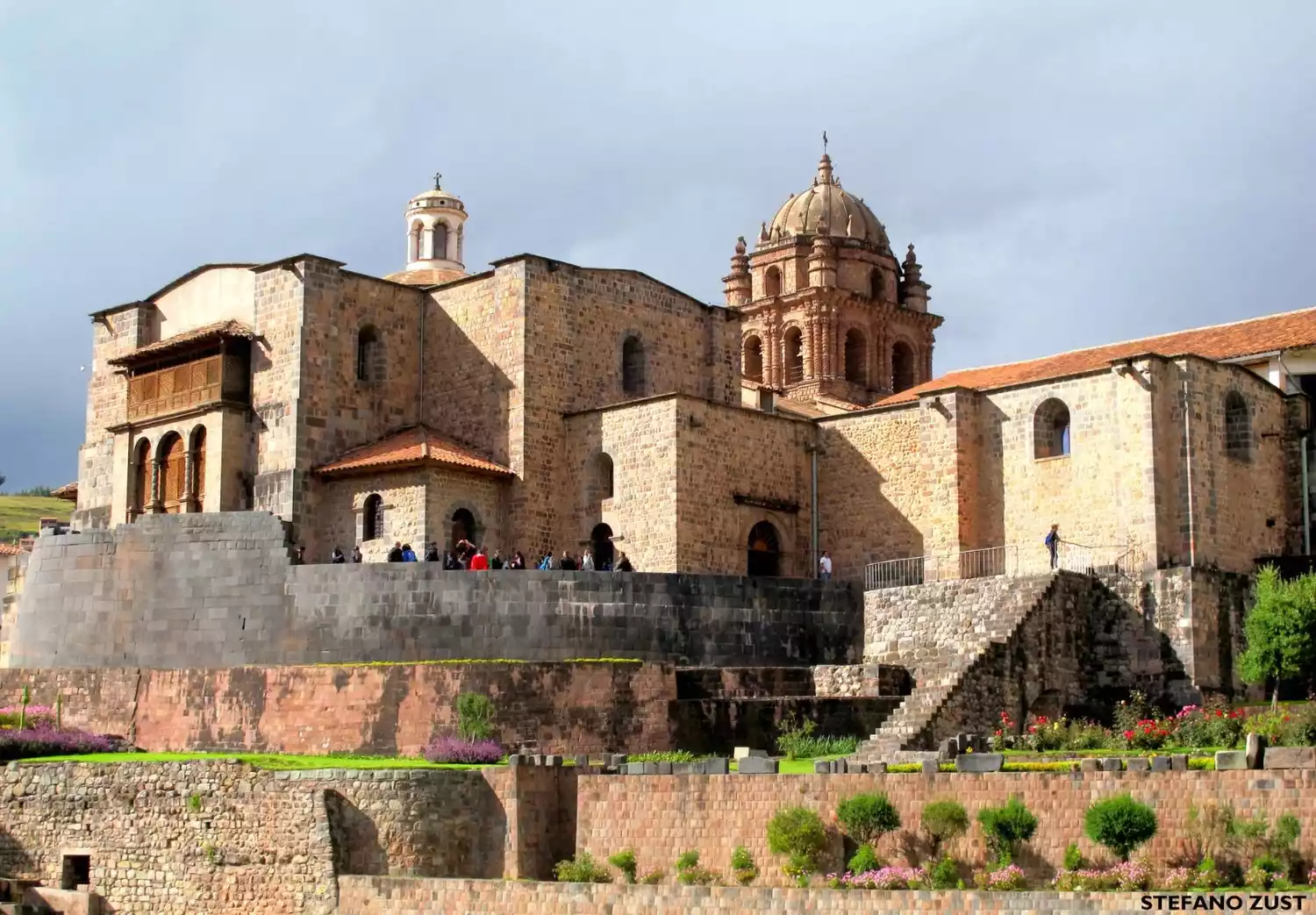 One day in the 14th century, in Cusco, the capital of the Inca Empire, nestled among the Andes, the people gathered in the magnificent, gilded Temple of the Sun to pray to their revered sun god and celebrate with song and dance another bountiful harvest of corn, the staple food of the local people. At this time, the Inca Empire remained isolated from the old world of Eurasia, but the bloody door that would change history was about to open.
One day in the 14th century, in Cusco, the capital of the Inca Empire, nestled among the Andes, the people gathered in the magnificent, gilded Temple of the Sun to pray to their revered sun god and celebrate with song and dance another bountiful harvest of corn, the staple food of the local people. At this time, the Inca Empire remained isolated from the old world of Eurasia, but the bloody door that would change history was about to open.
In 1531, a Spanish adventurer named Pizarro, with only 200 men, dreamed of conquering this vast empire, encompassing over 2 million square kilometers and housing nearly 10 million people. And he succeeded. Two years later, after several haphazard battles, Pizarro captured the almighty Inca Emperor Althuapa. He threatened to release his monarch only if the Inca filled a large room with gold. The Inca people, inspired by the golden walls of the Temple of the Sun, stripped the gold from the walls and presented it to Pizarro. But when the room was finally filled, Pizarro betrayed his loyalty and killed Althuapa. 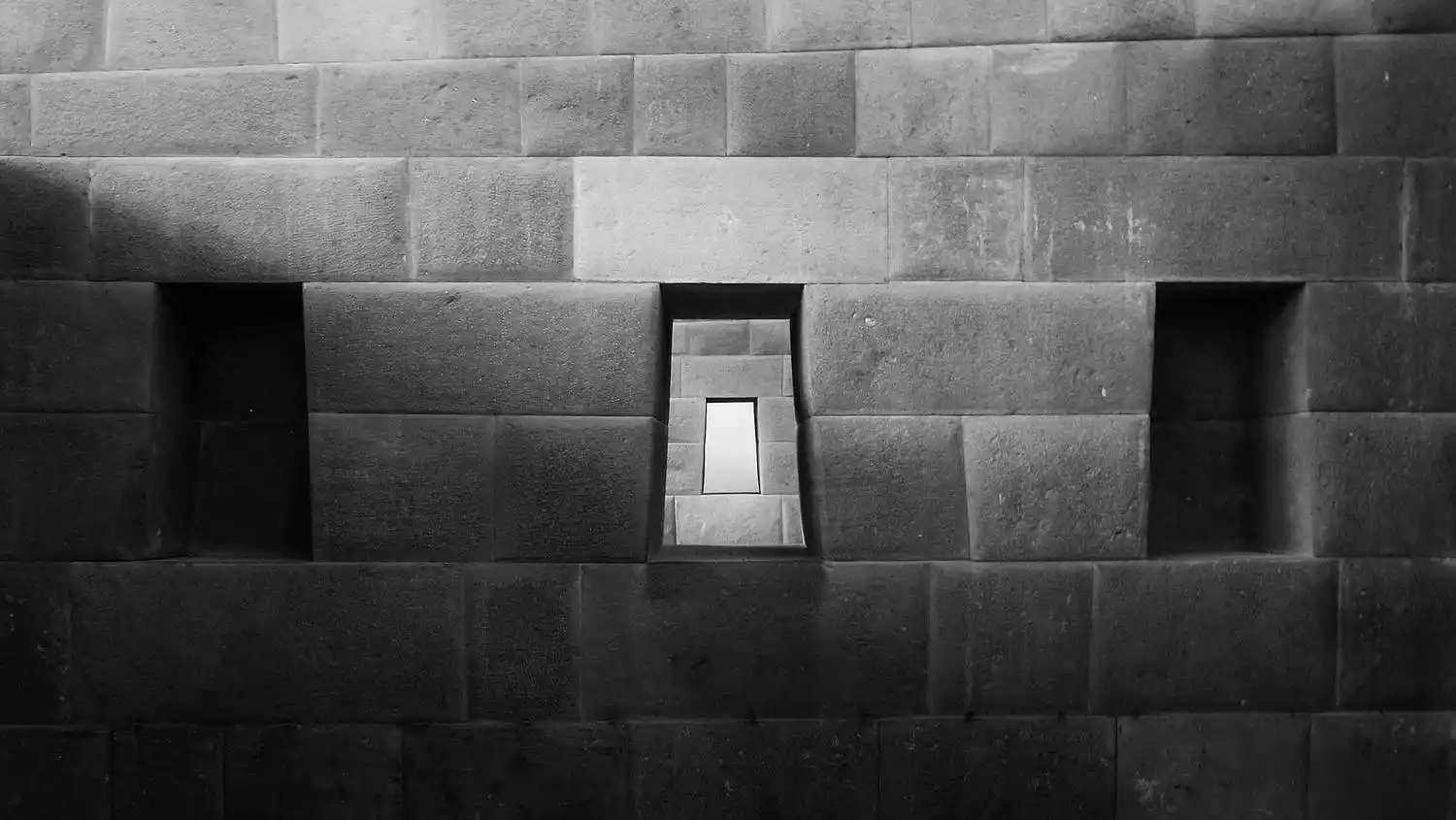 Cusco fell, and the once-mighty Inca Empire collapsed. The Spanish conquistadors told the Inca people: "The sun god is powerless. Trust in God, the only truth." They then built the Cathedral of Santo Domingo on the site of the Temple of the Sun. In the heart of the city, they spent another century constructing the even more magnificent Cusco Cathedral. Today it is a museum, and you can only see some of the temple walls and ruins. You can only imagine its former glory.
Cusco fell, and the once-mighty Inca Empire collapsed. The Spanish conquistadors told the Inca people: "The sun god is powerless. Trust in God, the only truth." They then built the Cathedral of Santo Domingo on the site of the Temple of the Sun. In the heart of the city, they spent another century constructing the even more magnificent Cusco Cathedral. Today it is a museum, and you can only see some of the temple walls and ruins. You can only imagine its former glory.
Plaza de Armas

In South American countries, almost every city has a central square, where the city’s most important churches and some historically significant buildings are gathered. People like to sit on the benches in the center of the square, daydream, read, and chat with strangers. Almost every square has a common name - Plaza de Armas.
Cusco's Plaza de Armas is the busiest spot in the city. On one side of the square is the Cusco Cathedral, with two flags flying in front of it: the red and white Peruvian flag and the colorful striped flag of the Inca Empire. In the center of the square, a bronze statue of Condorcanqui, the Peruvian national hero who resisted Spanish colonial rule, gazes down upon the world. He claimed to be a descendant of the Inca emperor and led the Inca people in numerous rebellions before being executed by the colonizers.

Cusco Cathedral
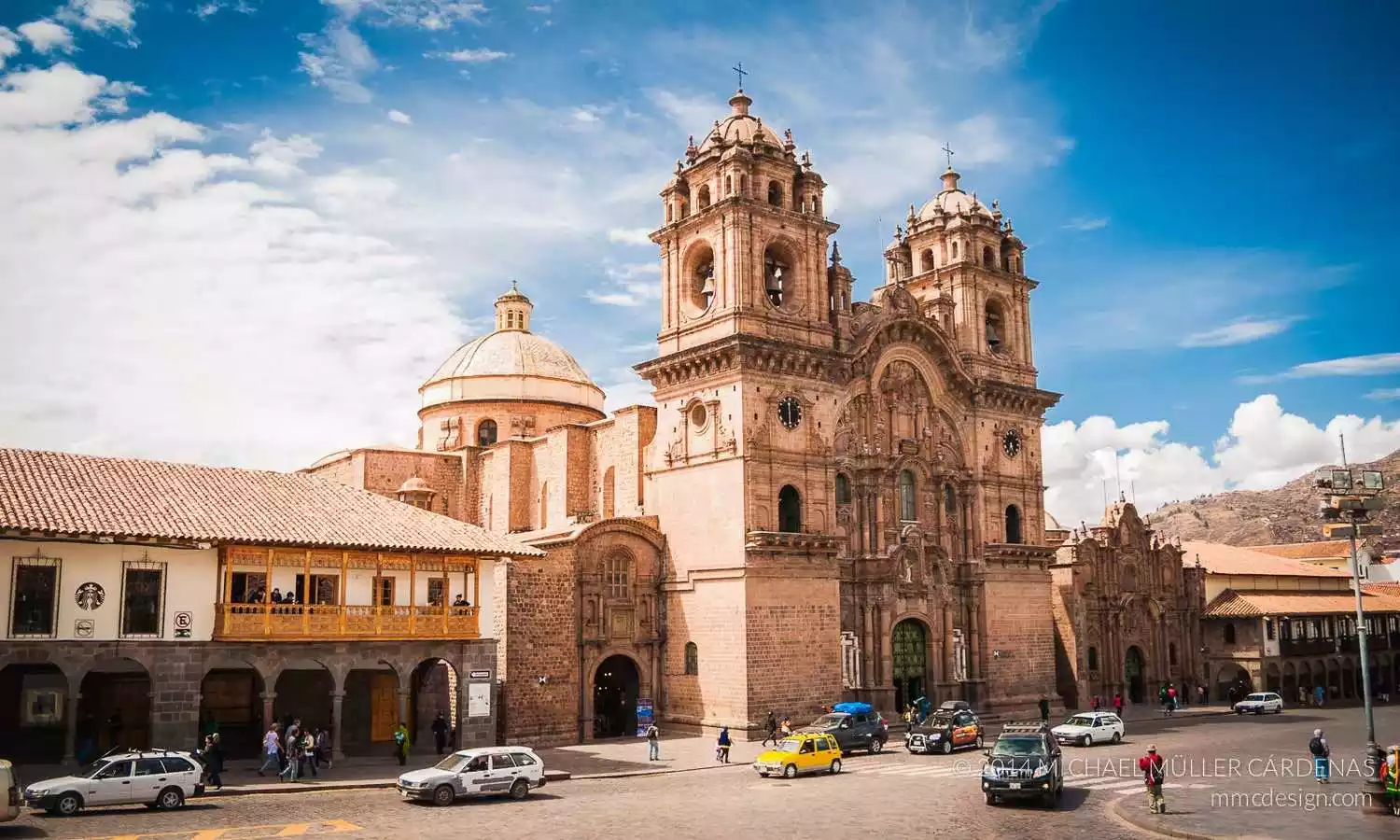
The colonists spent 100 years building the magnificent Cusco Cathedral in the heart of Cusco. To convert the Inca people to Catholicism, the Spanish even brought in mirrors, deceiving the locals by claiming they were the eyes of God, capable of seeing into their souls. Cusco Cathedral, situated on the ruins of the palace of Viracocha, the Inca god of creation, was built by Spanish rulers using stones from Sacsayhuamán.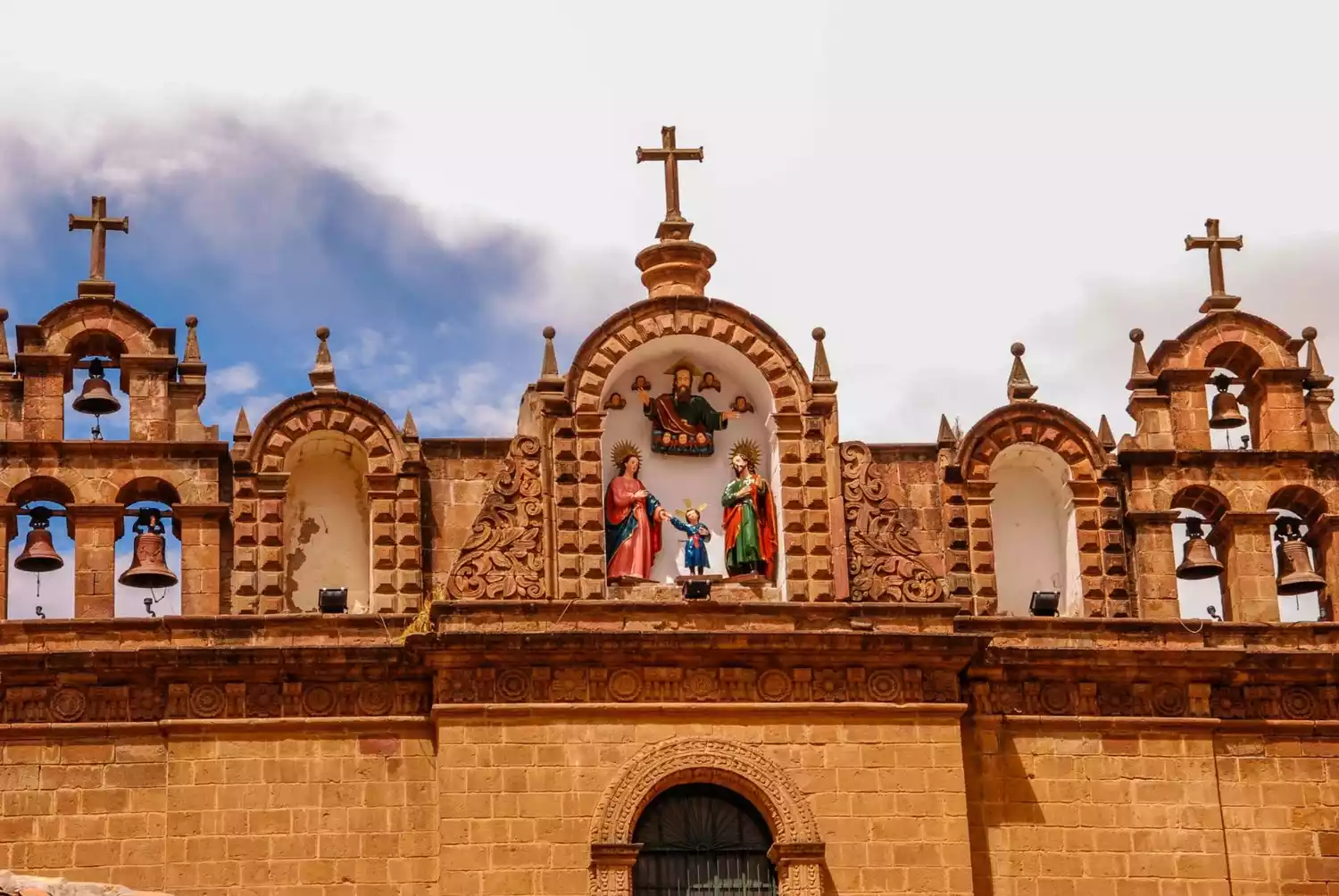
Walking into the Cusco Cathedral, one is greeted by numerous religious paintings, a magnificent altar, and devout worshippers, much like any other European cathedral. However, one painting clearly reveals that this is a South American cathedral.
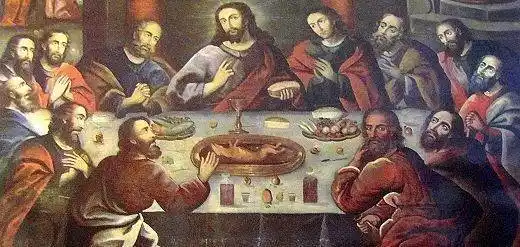
In a corner of the church hangs "The Last Supper" by Peruvian artist Zapata. In stark contrast to Leonardo da Vinci's masterpiece, the plate before Jesus and the twelve disciples actually contains roasted guinea pig, a traditional delicacy of the Andean people.
This is real roasted guinea pig.
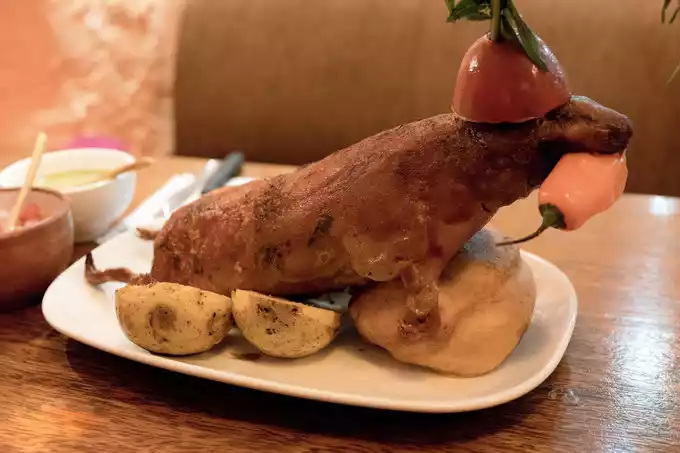
Cusco Central Market
Throughout my many travels, I've come to believe that only by visiting local markets can one truly discover the true, urban soul of a city. Cusco's Central Market is a prime example: crowds of people crowd the food stalls, while nearby vegetable, meat, and spice stalls clamor for food. Occasionally, a cat scurries by, searching for food discarded by diners.

Food is the main attraction at the Central Market. The broth pots feature not only pig heads but also frogs! Vats of juice, golden roast suckling pig, and tamales are also featured. Local clothing, incense, and other items are also available for one-stop shopping.


Ancient Inca Wall and Dodecagonal Inca Stone
In Cusco, an unassuming street holds a unique story. The walls lining this street date back to the Inca era. Stones of varying shapes and sizes are joined together seamlessly, reminiscent of the game of Huarongdao we played as children. The most famous of these stones is the dodecagonal Inga stone. As its name suggests, it has twelve sides and is the stone with the most corners left. The Incas constructed this irregular stone structure into an incredibly strong wall, one that has stood the test of time, despite natural and man-made disasters.
Inca Museum
The renowned Inca Museum is located in an alley around the corner from the majestic Cusco Cathedral. This courtyard, a common sight in the area, showcases the collections that tell of the former glory of the Inca Empire. The eight Inca mummies, in particular, and the map of the empire's former territory, made us yearn for those golden days.
Tips: Most of the exhibit information in the exhibition hall is in Spanish, and photography is prohibited inside the hall.
Sacred Valley
Cusco is the birthplace of the Inca Empire. Successive Inca kings launched their campaigns from here, conquering city after city, ultimately expanding their empire into a vast territory stretching from northern Ecuador in the north to northern Argentina in the south. Just a few dozen kilometers from Cusco lies the nation's "backyard," known locally as the Sacred Valley. With its mild climate, fertile soil, and stunning scenery, it served not only as the empire's granary but also as a popular holiday destination for the elite. Machu Picchu lies 75 kilometers northwest of Cusco, while the Sacred Valley lies between Cusco and Machu Picchu. The low-lying terrain and fertile soil made the Sacred Valley a vital source of grain during the Inca Empire. Today, the Sacred Valley boasts numerous Inca ruins, including Chinchero, the More Terraces, the Maras Salt Pans, and the Ollantaytambo.
Chinchero
We first arrived at the small indigenous village of Chinchero, where the villagers still wore traditional clothing, quite different from what we saw in Cusco. High above the village lies an Inca ruin, which requires a tourist package (including the More Terraces, Ollantaytambo, and the Maras Salt Flats, which are sold separately).





Moray Terraces
The Morei Rice Terraces are a unique Inca relic, with their circular terraces arranged in a regular pattern, rising from high to low. The view from above is unusual yet beautiful. The largest terrace has a drop of 30 meters. Archaeologists are unsure why the Inca designed it this way, but it's said that the combination of height, exposure to the sun, and shade creates a temperature difference of up to 15°C between the lower and upper levels, allowing for the cultivation of different crops. Even those accustomed to this experience find it surprising.
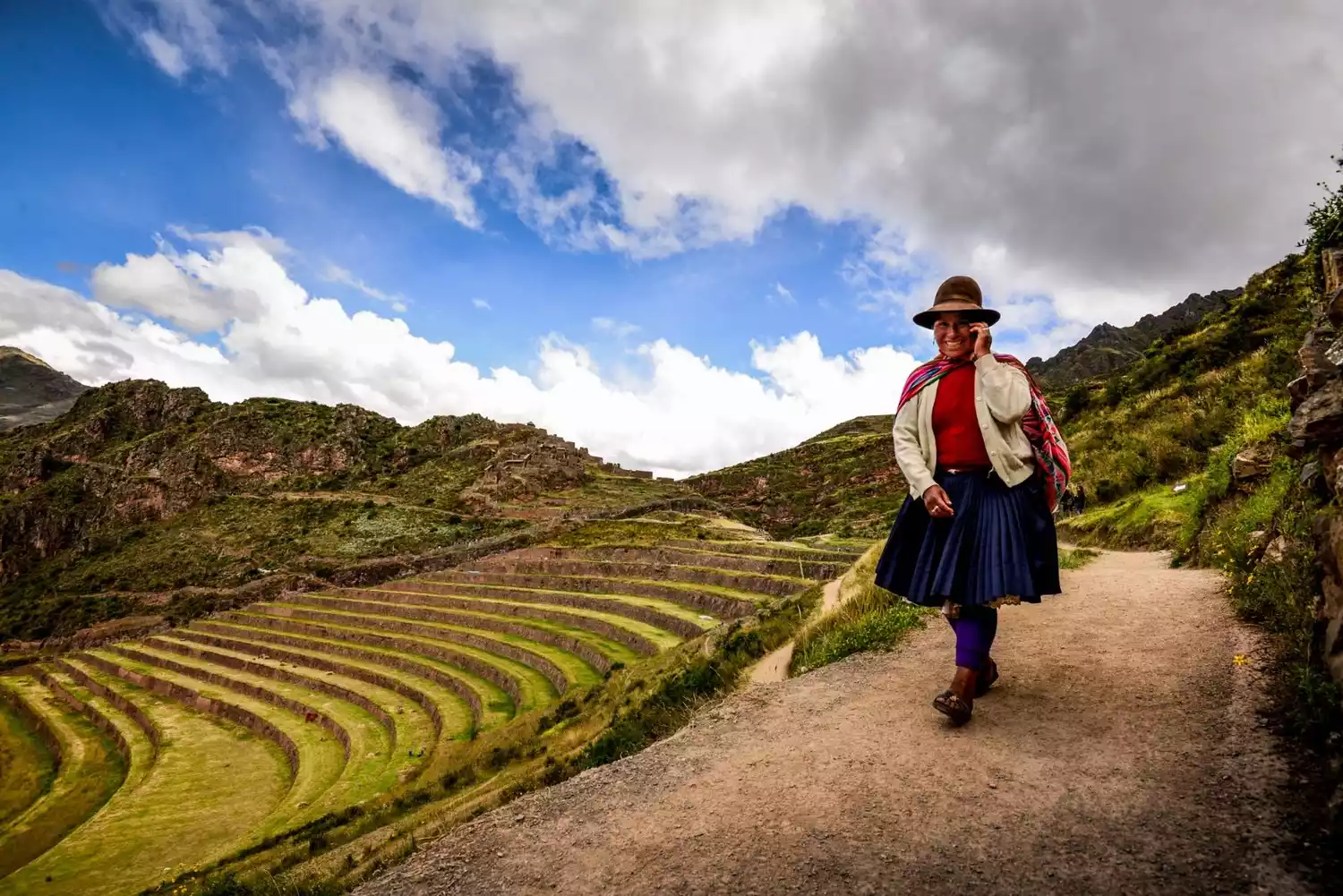



Salinas de Maras
My favorite attraction is the Maras Salt Pans near Urubamba in the Sacred Valley. These salt pans predate the Inca Empire and are still in use today. The locals have devised a complex drainage system to channel the highly saline spring water into thousands of terraced pools throughout the valley. As the water evaporates, the salt crystallizes and precipitates, allowing the salt to be harvested for consumption. From above, the view of over 3,000 white terraced salt pans, layer upon layer, is truly spectacular.





Ollantaytambo
The mighty Urubamba River roars relentlessly, and mountains towering over 5,000 meters frame the canyon. While the smoke of past wars vanishes from Ouyantai, I've boarded a train that takes me back in time. The train's destination is a small river valley town known as Hot Springs, once the end of the known world. 107 years ago, the world was unaware that just 10 kilometers away lay a once-glorious city: Machu Picchu.



Machu Picchu
"I saw ancient stone buildings nestled between the verdant Andean peaks, and torrents gushing down from citadels eroded by wind and rain for centuries." - Pablo Neruda, "From the Summit of Machu Picchu"
In 1909, 107 years ago, an archaeologist from Yale University, Anthony Bingham, arrived in Peru to explore Inca ruins around Cusco, specifically to locate Vilcabamba, the last Inca territory in the Sacred Valley. Led by a local guide, Bingham and his team journeyed deep into the mountains. Their journey, which lasted several days, yielded little success, but as is often the case, moments of despair can be a time of sudden enlightenment. In the Urubamba Valley, a local farmer led Bingham to the discovery of an ancient city, nestled in the clouds and surrounded by dense forest. This discovery confirmed the ancient legend of a great city belonging to the sun god nestled in the Andes. Perhaps the story came too suddenly, or perhaps Bingham was so excited at the time, that he didn't give it much thought or investigation, simply naming the city Machu Picchu after a nearby mountain.
According to research, Machu Picchu was built by two Inca kings in the 13th century. There are many theories as to why such an elaborate city was built in the mountains less than 100 kilometers from the imperial capital of Cusco. I tend to believe that it was built as a vacation resort for the Inca kings themselves.
About Transportation
Take the train to Machu Picchu, starting in Ollantaytambo (or Cusco) and ending in Aguascalientes. From Aguascalientes, you'll need to take another bus (or hike for 2 hours) to Machu Picchu.
January, February, and March are Peru's rainy season, making mudslides more likely. Therefore, during these months, trains only run from Ollantaytambo to Aguas Calientes. In other words, those traveling from Cusco to Machu Picchu in January, February, and March will need to take a bus or charter car to Ollantaytambo first, then transfer to the train to Aguas Calientes. During the rest of the year, you can take the train directly from Cusco to Aguas Calientes.
My itinerary this time was: I chartered a car from Cusco to explore the Sacred Valley all the way to Ollantaytambo, and then took a train from Ollantaytambo to Hot Springs.  Train from Ollantaytambo to Hot Springs:
Train from Ollantaytambo to Hot Springs:
Trains to Machu Picchu are currently operated by two railway companies:
Peru Rail: www.perurail.com
Inca Rail: www.incarail.com
Peru Rail offers two tiers of train tickets: Expedition and Vistadome. Expedition trains are standard, while Vistadome trains are known for their transparent carriages. This time, I took the Vistadome train.
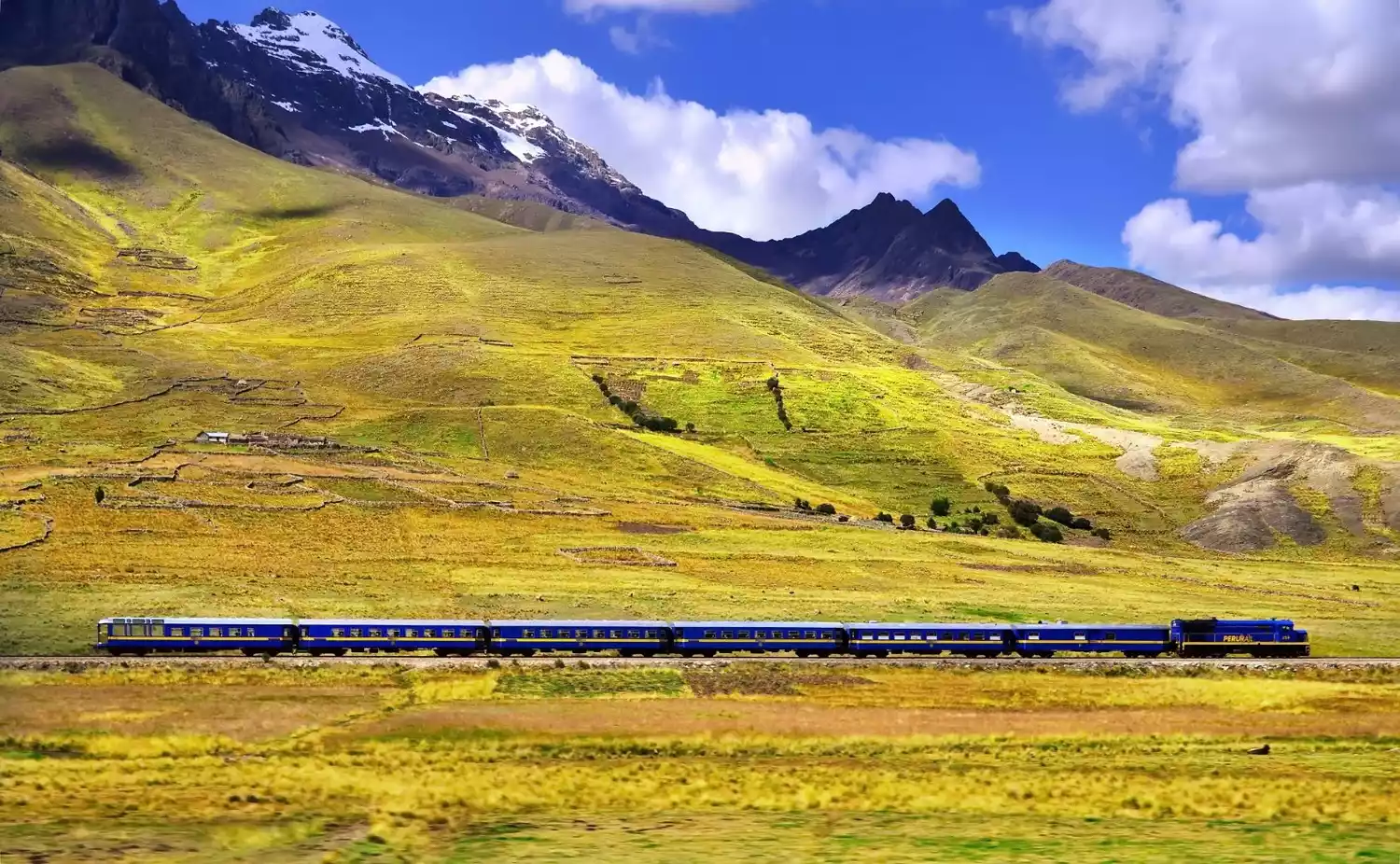



Transportation from Aguas Calientes to Machu Picchu:
The distance from the hot spring town to Machu Picchu is about 8km, and the entire road is mountainous. It takes about 1.5 to 2 hours to hike. In order to save energy to visit Machu Picchu, it is recommended to take a bus.
The ticket office is next to the bus station. One-way tickets cost $12 per person, and round-trip tickets cost $24 per person. The journey takes 25 minutes. Buses from Hot Springs to Machu Picchu depart every 15 minutes from 5:30 AM to 3:00 PM.
Departure time from Machu Picchu to Hot Springs Town: 6:30-17:45.
About ticket booking
Machu Picchu ticket booking official website: http://www.machupicchu.gob.pe/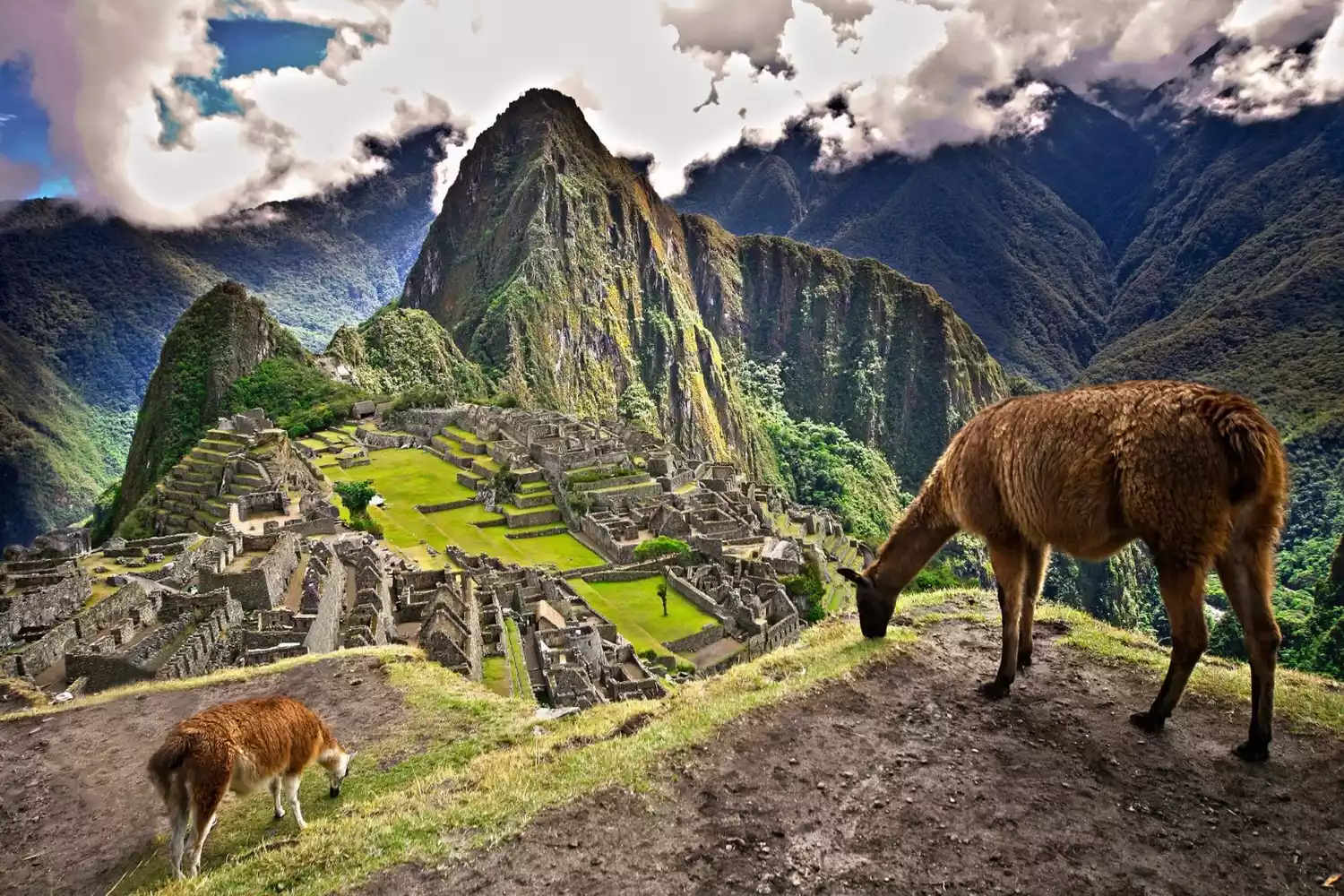
About Orient Express
This is the most luxurious journey to Machu Picchu. When you are there, you may even forget that this is the South American continent...

Each Orient Express train strives to recreate the classic charm of its past and continue its past glory. Therefore, luxury, comfort, refinement, thoughtfulness, and nostalgia are always the main themes. To this end, the entire train's interior design and service style are kept to the greatest extent possible to preserve our imagination.
The HB is composed of a work car, a dining car, a bar car and a sightseeing car. The dining car is not very spacious, with double rows of seats on one side and a single row on the other side. The corridor can only accommodate one person. The teak floor has an antique flavor, and the interweaving sound of solid wood floors when walking on it is unique.
The tableware and wine glasses on the table gleam with quality, while a small table lamp accentuates a sense of classic elegance. Frosted glass decorations and lamps bring a charming medieval atmosphere to the carriage, while exquisite artwork is embedded in the mahogany walls.
It truly felt like stepping back into an era straight out of movies and novels, where luxury wasn't ostentatious, refinement wasn't extravagance, and meticulousness wasn't overly complex—everything was just right. Besides being able to personally experience these prestigious designs, every passenger on the train enjoyed exclusive butler service throughout the entire journey, leaving me with a plethora of fantasies about the journey: sophisticated and serious? Intense and lively? Luxurious and comfortable? However, sometimes a high-end experience isn't always free and joyful, often constrained by status and etiquette, making service inevitably feel stiff or subservient. But Belmond's service is measured, humble, and attentive, not servile or menial. It offers a tasteful experience of high-end professionalism, not the illusion of royalty.

Many passengers say that the carriages are like "time machines", which is appropriate, taking people from the modern era to the Inca Empire, and this is especially true for the HB.

Our high-speed rail can reach speeds exceeding 400 km/h, which is the Chinese speed. It has brought inter-city exchanges and continuously improved efficiency, but the Orient Express travels at a leisurely speed of about 60 km/h. This slow speed is to reminisce the past and to take you back to the age of discovery. There is no need to pursue efficiency here, but to slow down and follow the Urubamba River to find and construct the Machu Picchu in your heart.


Funeral Stone Guard House
Enter the scenic area and ascend directly to the Funeral Stone Guardian Shed to admire a breathtaking view. As the first rays of morning light descend, Machu Picchu gradually emerges from the thick fog surrounding the mountains. The Inca sun god bestows golden sunlight upon the ancient city, and the entire city's outline becomes clear.
The Funeral Stone Guardian Shed offers the best views of Machu Picchu, making it the "viewfinder" of Machu Picchu.  Machu Picchu's magic lies not only in its ancient history but also in its captivating natural craftsmanship. Looking sideways behind the ancient city, the taller Huayna Picchu resembles a piercing Inca warrior, perhaps silently guarding this sacred site for centuries.
Machu Picchu's magic lies not only in its ancient history but also in its captivating natural craftsmanship. Looking sideways behind the ancient city, the taller Huayna Picchu resembles a piercing Inca warrior, perhaps silently guarding this sacred site for centuries.
Compared to modern cities, Machu Picchu's urban planning is far more organized. The city's northwest is divided by the Sacred Plaza, while the southeast is the agricultural area. The urban area is further divided into the Upper and Lower Towns, housing the nobility and the common people, respectively.  Machu Picchu boasts 140 structures, including temples, altars, parks, and residences. It also boasts a comprehensive water system, ingeniously designed by the Incas to divert water from the Urubamba River up the mountain and flow through every room.
Machu Picchu boasts 140 structures, including temples, altars, parks, and residences. It also boasts a comprehensive water system, ingeniously designed by the Incas to divert water from the Urubamba River up the mountain and flow through every room.
Sacred Square
The area where the main temple, the Three Window Temple, and the Sun-Shuan Stone are located is called the Sacred Square.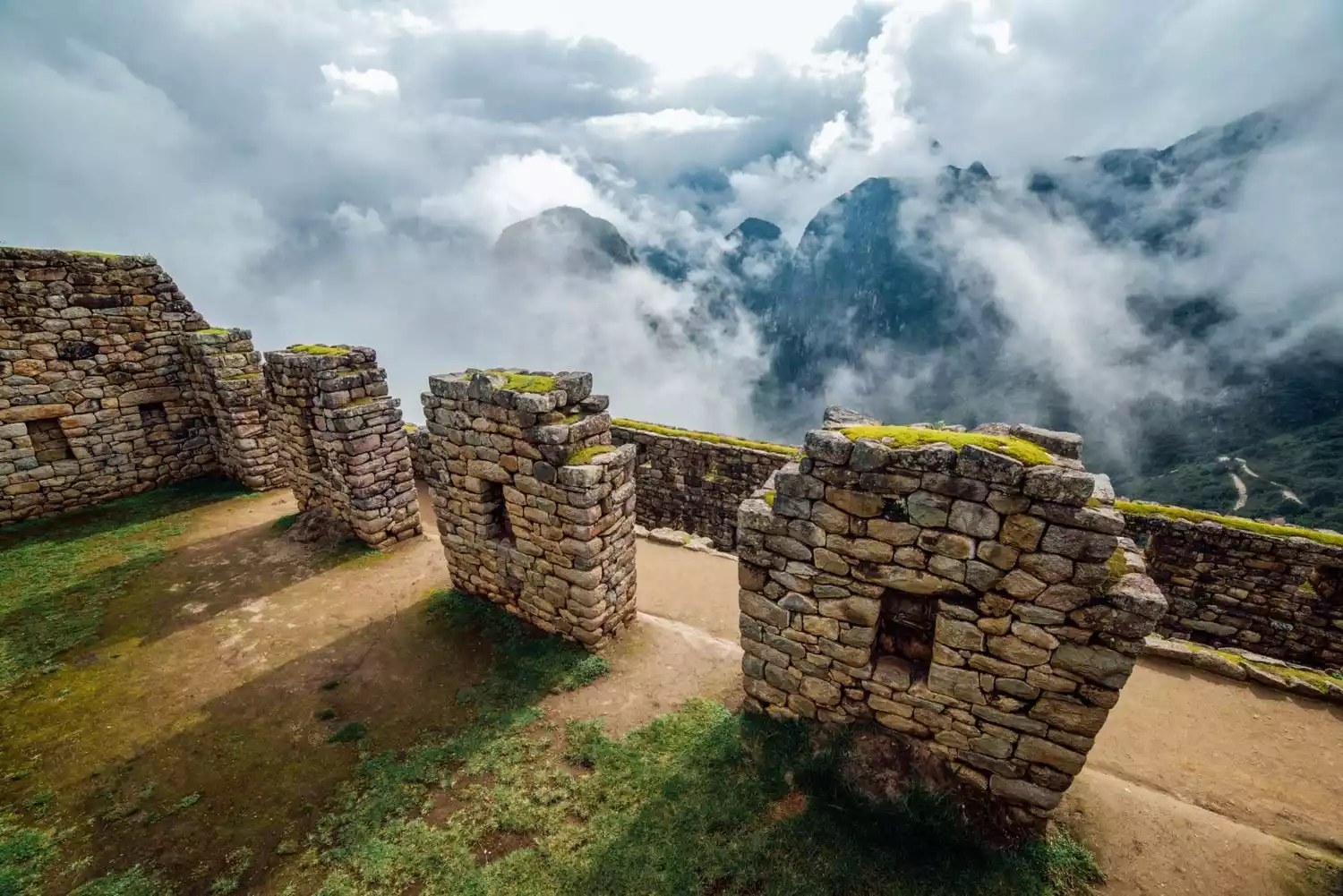
Religion is a crucial element in Machu Picchu's history. Within the city's Temple of the Sun, three windows face east, south, and north. The east-facing window welcomes the first rays of sunlight each day, while the south-facing window casts sunlight onto the shrine and into the caves at the summer and winter solstices, respectively. The former symbolizes the reality of life, while the latter represents the emptiness of time. During these solstices, grand sacrificial ceremonies are held within Machu Picchu. Atop the city's highest point stands a massive stone—the Sun Stone. In Inca times, it served as a calendar, allowing people to determine the date and time.
Standing in front of the Sanchuang Temple, looking back, you can see the "Luanshigang" quarry, which once provided raw materials for the expansion of the city.
Of course, Machu Picchu isn't just a towering abode; it also embraces the mundane world. In the agricultural area, vast terraced fields are built from the mountainside, and animal pens house numerous alpacas. Within the city, a large number of farmers and herders cultivate the land, providing supplies for the entire city. Soldiers are stationed at a peak outpost, providing 24/7 observation of enemy activity in the valley.
At the end of Machu Picchu is the entrance to Huayna Picchu. Next to the entrance to Huayna Picchu is the sacred stone. The Incas worshipped mountains, especially triangular peaks, so they used huge stones to depict the shape of the peaks for worship.
Temple of the Condor Heroes
Two massive, naturally triangular rocks lie diagonally on the ground, forming the condor's wings. A block of rock in front of the wings has been carved into the shape of the condor's head, eyes, and beak. Inca stonemasons have skillfully used the rock's natural shape to create a dramatic depiction of a condor in flight.
Every miracle invites reflection. I carefully observed the architecture of Machu Picchu. It's mostly built of stone, without mortar or other bonding agents. Yet, the stones fit together so seamlessly that they can withstand the impact of powerful earthquakes. The ancient Inca were proficient in mathematics and astronomy, and had advanced agricultural technology for their time. However, they never invented the wheel, a necessary tool for human evolution. Furthermore, this land lacked livestock like horses and dogs, which greatly facilitated human life. This suggests that the Inca, thousands of years before the arrival of colonists, built this magnificent city with their bare hands, a true feat of ingenuity.
Huayna Pichu
The towering peak behind the ruins of Machu Picchu, pictured in the standard postcard image, is a striking sight. While it may appear intimidatingly steep in photos, the climb reveals it's not a straight up or straight down. For those who aren't particularly afraid of heights or simply adore climbing, climbing to the summit of Huayna Picchu (http://place.qyer.com/poi/95100/) is a must-see. Standing atop the massive granite peak and gazing down at Machu Picchu is an unforgettable experience. 
The Peruvian government limits the number of visitors allowed to climb Huayna Picchu to 400 per day, with two separate admissions: the first at 7:00 AM and the second at 10:00 AM, allowing 200 visitors each time. Tickets must be purchased in advance. At the northernmost point of Machu Picchu is the Huayna Picchu ticket checkpoint, where tickets and passports will be checked again. The climb takes 45 minutes at a normal pace, or 25 minutes for those with more stamina. The scenery along the way is breathtaking, so take your time and enjoy the scenery.
Fun Facts about Machu Picchu
Legend has it that upon his death, the emperor of Machu Picchu would leap from Huayna Picchu, a feat his subjects called "ascension." This is the inspiration for the ascension in many online games. Upon achieving this, the emperor would gain eternal life and protect his empire. When the Spanish invaded Machu Picchu, the emperor followed his predecessor's instructions and leaped from Huayna Picchu, believing he could protect his empire. However, he was still sacked by the Spanish.
2. Besides touring the ruins, another fun activity at Machu Picchu is interacting with alpacas. Near the Temple of the Condor, there are numerous alpacas. Since Machu Picchu is crowded with tourists every day, the alpacas have long been accustomed to the presence of visitors. So, you can pet these mythical creatures to your heart's content. If you're in the mood, you can even take a selfie with them. Just be careful of the alpacas' saliva (they can spit when they get impatient).
3. Machu Picchu has been designated a dual physical and cultural heritage site, making it the only South American site besides Christ the Redeemer in Rio de Janeiro, Brazil, to be included among the Seven Wonders of the World. In fact, Machu Picchu's architectural craftsmanship is significantly superior to that of the late Khmer Empire. Machu Picchu's fame stems largely from its secluded location in the mountains, creating a magical atmosphere.
Are you tempted? Then please follow our steps and take a trip to South America! ▼





